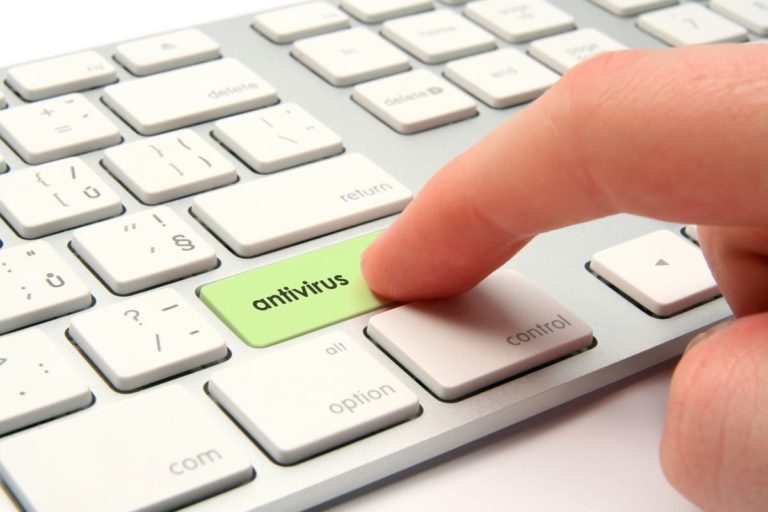Malware and anti-malware
Definition of malware
The term “malware” is a contraction of “malicious software”. Malware is a computer program designed to enter a computer system without authorisation and cause damage, steal data or disrupt the normal operation of the computer or network. Malware is created for the purpose of causing harm, whether by spying on users, stealing confidential data, corrupting files or enabling cybercriminals to take control of a system. Malware first appeared in the 1980s, but it wasn’t until the Windows PC boom of the 1990s that malware threats really exploded. Malware can take the form of executable code, scripts, active content and other software, which differentiates it from phishing attacks.
What is the purpose of malware?
The purpose of malware is to cause damage, compromise security or collect data without the consent of the user or owner of the targeted computer or system. Malware can have a variety of purposes, including:
- Data theft: Many malwares are designed to steal sensitive data such as identifiers, financial, personal or commercial data.
- Ransomware: Some malware encrypts the victim’s files and demands a ransom in exchange for the decryption key.
- Sabotage: Some malware is designed to disrupt the normal operation of a system, which can lead to breakdowns, data loss or downtime.
- Spying: Some malware is used to spy on the victim’s activities, such as recording keystrokes or intercepting communications.
- Propagation: Some malware’s main aim is to spread to other systems, forming a network of bots (botnet) under the cybercriminal’s control.
How does malware work and how is it triggered?
How malware is triggered depends on its design and objectives. Here are some common methods by which malware can be activated:
- Accidental download or execution: Users can download or execute malware by opening malicious email attachments, clicking on infected links or downloading files from untrusted sources.
- Exploitation of vulnerabilities: Some malware exploits security holes in the operating system, applications or plugins to install and run without the user’s consent.
- Propagation via local networks or the Internet: Some malware automatically propagates via local networks or the Internet, looking for vulnerable systems to infect.
- User interaction: Malware can be triggered when the user interacts with an infected item, such as a downloaded file, email attachment or compromised website.
- Scheduled launch: Some malware is designed to activate at a specific date or time, which can delay detection.
Evasion techniques
Malware is constantly evolving to evade detection. They use sophisticated evasion techniques such as polymorphism (modifying their code to evade antivirus signatures), the use of encrypted communication channels and the exploitation of known software vulnerabilities. Evasion techniques are a key aspect of the evolution of malware, as it constantly seeks to avoid detection and persist on infected systems. Here’s how malware evolves using evasion techniques:
- Polymorphism: Malware uses polymorphism to constantly modify its source code, making its signature unique at each execution. This makes signature-based detection difficult.
- Encryption: Malware can encrypt its malicious code or communications to mask its presence. They often use strong encryption algorithms to make detection more difficult.
- Code injection: Some malware injects its malicious code into legitimate running processes, making it less detectable. This can also allow them to steal data or carry out malicious activities without arousing suspicion.
- Scan detection: Some malware monitors scanning systems (antivirus, behavioural) and modifies its own activity if it is likely to be detected.er detection: Some malware monitors the behaviour of the behaviour analyser and modifies its own behaviour if it detects that it is being analysed.
- Process injection: Malware can inject itself into legitimate running processes to blend into the system environment.
Use of advanced attack vectors: Malware can propagate via advanced attack vectors such as zero-day exploits, fileless attacks, or trust-based attacks.Quels sont les types de malwares les plus connus?
Malware takes many forms, each with its own objectives and methods. Here is an overview of the most common types of malware:
- Viruses : Computer viruses are one of the oldest and best-known types of malware. Viruses are programs that attach themselves to existing files and spread when these files are executed. A computer virus is a type of malicious software designed to attach itself to files and then spread by infecting other files or computer systems. Viruses are usually spread when a user executes an infected file or opens a malicious attachment in an e-mail or other medium. One of the most notorious viruses is “ILOVEYOU”. It spread via e-mail attachments and caused major damage by corrupting files and spreading rapidly in 2000.
Worms: Autonomous programmes capable of replicating themselves and spreading across computer networks. - Trojans : A Trojan is a type of malicious software that masquerades as a legitimate program or file. It has no harmful capabilities of its own, making it difficult to detect, but it can open the door to other malware or threats by setting up hidden communication channels or modifying system parameters. “Zeus” (also known as “Zbot”) is one of the most notorious Trojans. It has been used to steal banking information and other sensitive data. Emotet was a particularly dangerous and virulent botnet and Trojan. Here is a definition of Emotet: Emotet was a Trojan malware that was first discovered in 2014. It had evolved over the years to become one of the most formidable threats in the cyber security landscape. Emotet’s main objective was to steal sensitive data, such as credentials, bank details and other confidential information, from infected computers. However, what made it even more dangerous was its ability to spread other malware, including ransomware and banking Trojans.Emotet was mainly distributed via phishing campaigns, where victims were tricked into opening malicious email attachments. Once a system was infected, Emotet could spread rapidly across a network, compromising other computers and linking them to the Emotet botnet. Cybercriminals used the Emotet network for a variety of malicious activities, including the distribution of ransomware such as Ryuk and TrickBot. In January 2021, a coordinated international operation succeeded in neutralising the Emotet network, putting an end to its persistent threat. The authorities dismantled Emotet’s command and control (C2) servers, halting its spread and disinfecting infected systems. The story of Emotet highlights the importance of cybersecurity and vigilance in the face of constantly evolving threats on the Internet.
- Spyware : Programs designed to monitor and collect information on user activity without their consent. One of the best-known spywares is “SpyEye”. This was a piece of malware designed to steal financial information, including bank details, and has been widely used in attacks to steal sensitive information. In addition to “SpyEye”, another notable example is “FinFisher” (also known as “FinSpy”), spyware used for large-scale surveillance and espionage.
- Ransomware : Malware that encrypts the victim’s files and demands a ransom to decrypt them. The most famous ransomware is probably “WannaCry”. It made global headlines in 2017 by infecting thousands of computer systems worldwide and demanding ransoms to decrypt files.
- Adware : Advertising programmes that display unsolicited advertising and collect information about browsing habits.
- Rootkit: Rootkits are attacks made up of several inactive and non-suspicious software components taken separately. It is only when the last piece is activated that it takes effect and enables the infection of various elements of the host system, even taking control of it.
- Keyloggers: keystroke loggers Keyloggers secretly record all user keystrokes, enabling cybercriminals to steal sensitive information such as user IDs and passwords.
- Botnets : Botnets are networks of compromised machines controlled remotely by attackers. They are often used to launch massive DDoS attacks or to distribute spam. One of the most notorious botnets is “Conficker”. It has been active for several years and has infected millions of machines worldwide, creating a massive network of compromised systems under the control of the attackers.
- Scareware : Scareware misleads users into thinking they have serious computer infections, then tricks them into buying unnecessary security software.
- Malicious cryptocurrency mining, also known as unintended mining or cryptojacking, is an increasingly common piece of malware usually installed via a Trojan horse. It allows someone else to use your computer to mine a cryptocurrency such as Bitcoin. So instead of letting you collect the money on your computer, the miners send the coins collected to their own account instead of yours.
How can I protect my organisation against malware?
To protect your organisation effectively against malware, it is essential to follow certain good security practices:
- Regular updates : Keep your operating system, software and applications up to date to correct known vulnerabilities.
- Security software: Use high-quality anti-virus and anti-malware software to detect and remove malware.
- Be cautious: Beware of unsolicited e-mails and don’t click on attachments or links from unknown senders.
How can Altospam protect your organisation against malware?
Altospam offers a complete email security solution designed to detect and block malware, malicious links and phishing attacks. With state-of-the-art malware detection technologies, Altospam can help your organisation effectively prevent email security threats. By constantly monitoring malware trends, we regularly update our solution’s filters to counter emerging threats.
A single piece of malware can compromise an entire business, which is why we are committed to doing everything we can to block them and to building a veritable fortress against all viruses and malware. That’s why Altospam’s Mailsafe includes six complementary anti-virus and unknown virus detection systems. All emails and their attachments are systematically scanned by these six antivirus systems.
By adopting sound security practices and using advanced email security and protection solutions like Altospam Mailsafe, you can protect your organisation from these threats.
The history of malware in a few dates
The history of malware is marked by many significant milestones and important dates. Here are some of the key dates in the history of malware:
- 1971 – The first documented malware: The very first known malware, called “Creeper”, was a computer program that spread over the ARPANET network, the precursor to the Internet. It displayed a harmless message, but it was the first manifestation of malicious software.
- 1983: The first computer virus, “Elk Cloner”, was discovered on Apple II computers. It spread via floppy disks.
- 1986: The first MS-DOS PC virus, “Brain”, was discovered. It spread via infected floppy disks.
- 1992: The first ransomware, “AIDS Trojan” (also known as PC Cyborg), was discovered. It demanded a ransom to restore access to files.
- 1999: The “Melissa” worm was discovered, infecting systems via e-mail attachments.
- 2000: The “ILOVEYOU” virus caused a worldwide epidemic of e-mail infections. It was one of the first major malware epidemics on the Internet. It spread via e-mails and caused enormous disruption.
- 2003: The “Blaster” (or MSBlast) worm exploited a Windows vulnerability to spread rapidly.
- 2008: The “Conficker” worm infected millions of computers worldwide, forming one of the largest botnets in history.
- 2010: Stuxnet is a computer worm that was discovered and attributed to a targeted cyber attack against industrial control systems in Iran. It was considered one of the first examples of a state-sponsored cyber weapon.
- 2013 : The “CryptoLocker” ransomware introduced encryption techniques to extort ransoms.
- 2014 – Discovery of Emotet: it appeared in 2014 as a banking Trojan. It has evolved to become one of the most formidable threats, used to distribute ransomware and other malware.
- 2016 – Appearance of Mirai: Mirai malware targeted connected objects (IoT) to form a vast botnet used for massive DDoS attacks.
- 2017 : The “WannaCry” ransomware crippled organisations around the world by exploiting a Windows vulnerability.
- 2019 – Pegasus discovered: spyware developed by Israeli company NSO Group. It was used to target mobile devices and access user data, including public figures.
- 2021 – Emotet neutralisation operation: In January 2021, an international operation succeeded in neutralising the Emotet network, putting an end to its persistent threat.
Free up your mailboxes. Stop intrusions. Protect your organisation.
Malware? Ransomware? Phishing? Email is the first vector of a cyber attack. Our solution detects and neutralises known and unknown threats in real time.


